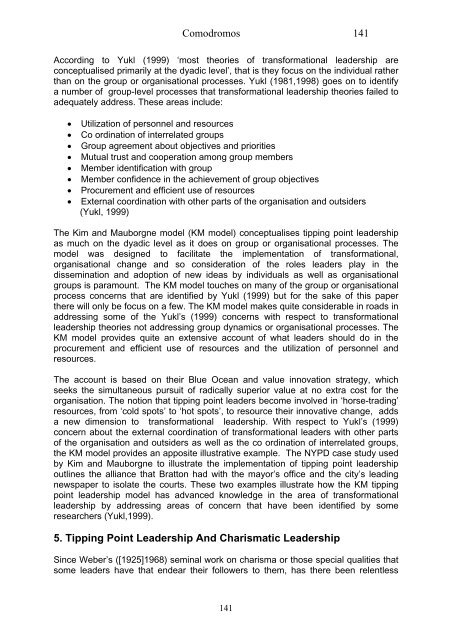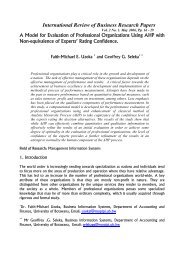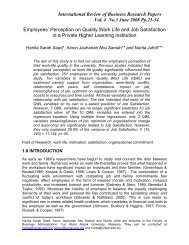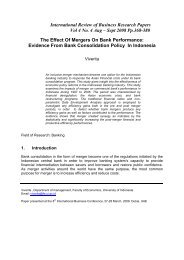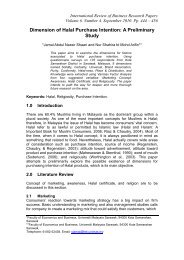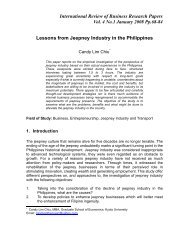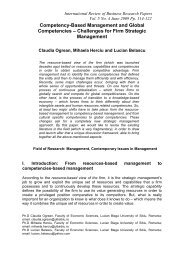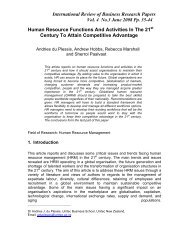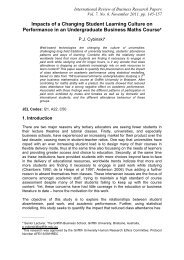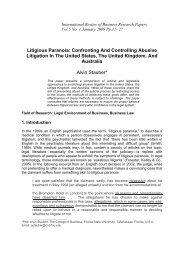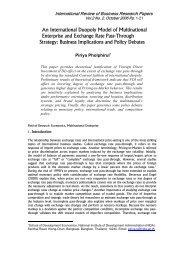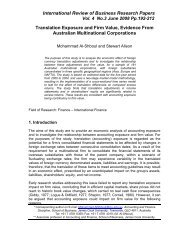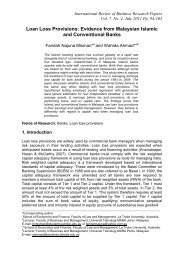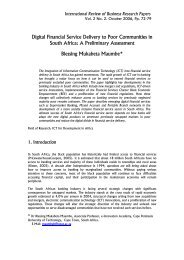Tipping Point Leadership And Its Relationship To Transformational
Tipping Point Leadership And Its Relationship To Transformational
Tipping Point Leadership And Its Relationship To Transformational
You also want an ePaper? Increase the reach of your titles
YUMPU automatically turns print PDFs into web optimized ePapers that Google loves.
Comodromos 141According to Yukl (1999) ‘most theories of transformational leadership areconceptualised primarily at the dyadic level’, that is they focus on the individual ratherthan on the group or organisational processes. Yukl (1981,1998) goes on to identifya number of group-level processes that transformational leadership theories failed toadequately address. These areas include:• Utilization of personnel and resources• Co ordination of interrelated groups• Group agreement about objectives and priorities• Mutual trust and cooperation among group members• Member identification with group• Member confidence in the achievement of group objectives• Procurement and efficient use of resources• External coordination with other parts of the organisation and outsiders(Yukl, 1999)The Kim and Mauborgne model (KM model) conceptualises tipping point leadershipas much on the dyadic level as it does on group or organisational processes. Themodel was designed to facilitate the implementation of transformational,organisational change and so consideration of the roles leaders play in thedissemination and adoption of new ideas by individuals as well as organisationalgroups is paramount. The KM model touches on many of the group or organisationalprocess concerns that are identified by Yukl (1999) but for the sake of this paperthere will only be focus on a few. The KM model makes quite considerable in roads inaddressing some of the Yukl’s (1999) concerns with respect to transformationalleadership theories not addressing group dynamics or organisational processes. TheKM model provides quite an extensive account of what leaders should do in theprocurement and efficient use of resources and the utilization of personnel andresources.The account is based on their Blue Ocean and value innovation strategy, whichseeks the simultaneous pursuit of radically superior value at no extra cost for theorganisation. The notion that tipping point leaders become involved in ‘horse-trading’resources, from ‘cold spots’ to ‘hot spots’, to resource their innovative change, addsa new dimension to transformational leadership. With respect to Yukl’s (1999)concern about the external coordination of transformational leaders with other partsof the organisation and outsiders as well as the co ordination of interrelated groups,the KM model provides an apposite illustrative example. The NYPD case study usedby Kim and Mauborgne to illustrate the implementation of tipping point leadershipoutlines the alliance that Bratton had with the mayor’s office and the city’s leadingnewspaper to isolate the courts. These two examples illustrate how the KM tippingpoint leadership model has advanced knowledge in the area of transformationalleadership by addressing areas of concern that have been identified by someresearchers (Yukl,1999).5. <strong>Tipping</strong> <strong>Point</strong> <strong>Leadership</strong> <strong>And</strong> Charismatic <strong>Leadership</strong>Since Weber’s ([1925]1968) seminal work on charisma or those special qualities thatsome leaders have that endear their followers to them, has there been relentless141


